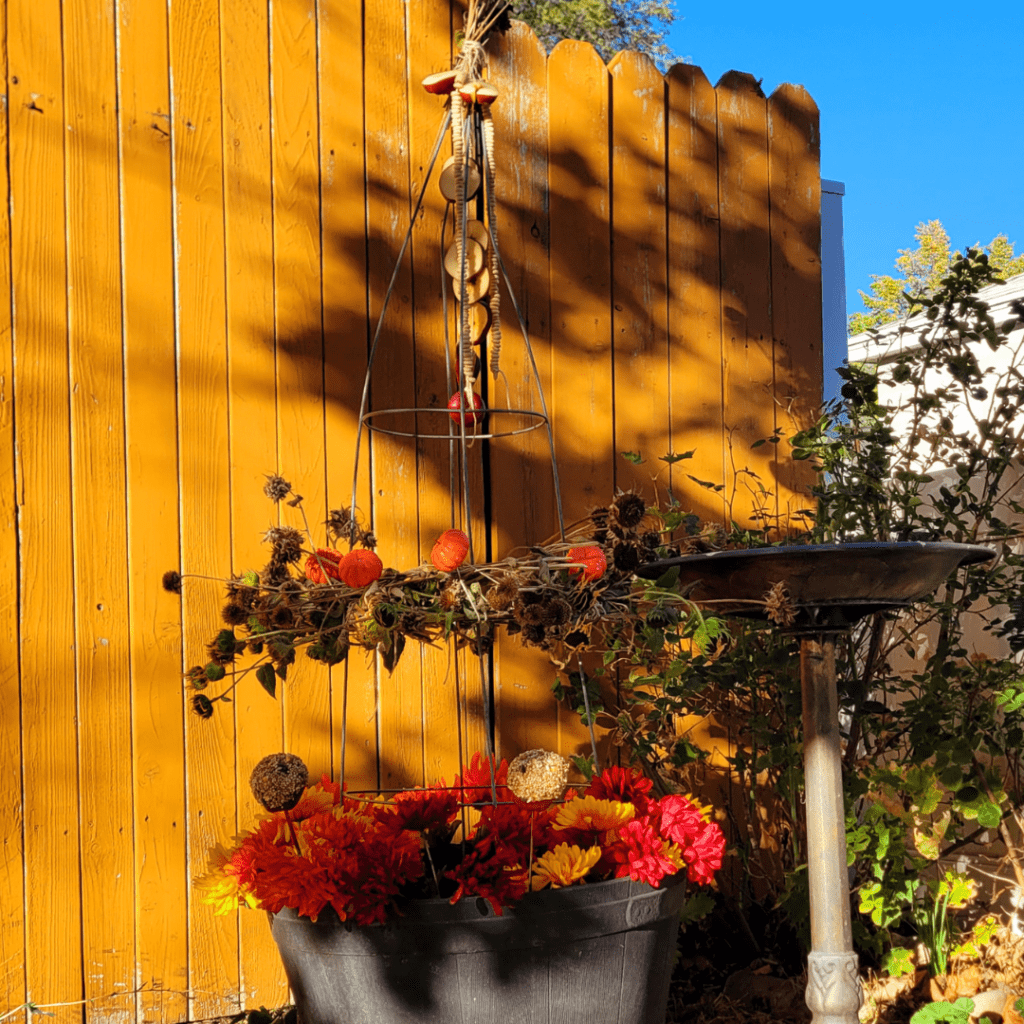Bird nesting balls.
What Is Included in This Post:
- Introduction to DIY Bird Nesting Balls
- Benefits of Providing Nesting Balls for Birds
- Materials and Tools Required
- Step-by-Step Instructions to Create a Bird Nesting Ball
- Tips for Attracting Birds to Your Nesting Ball
- Maintaining and Monitoring the Nesting Balls
- Other Creative Ideas for Bird Nesting Structures
- Conclusion and Final Thoughts
- Frequently Asked Questions
Bird nesting balls are a wonderful way to attract and support a variety of bird species in your backyard or garden. These charming structures provide a safe and cozy environment for birds to build their nests and raise their young. Making your own DIY bird nesting balls not only allows you to contribute to bird conservation efforts, but also offers a rewarding and enjoyable experience. In this article, I will explore the benefits of providing nesting balls for birds, the materials and tools required to create them, step-by-step instructions for construction, tips to attract birds to your nesting balls, maintenance and monitoring considerations, alternative nesting options, and conclude with some final thoughts. Get ready to welcome a thriving avian community by learning how to make your very own DIY bird nesting balls.
This is a pinnable post. Tap or hover over any image in this post to pin to your Pinterest Boards.
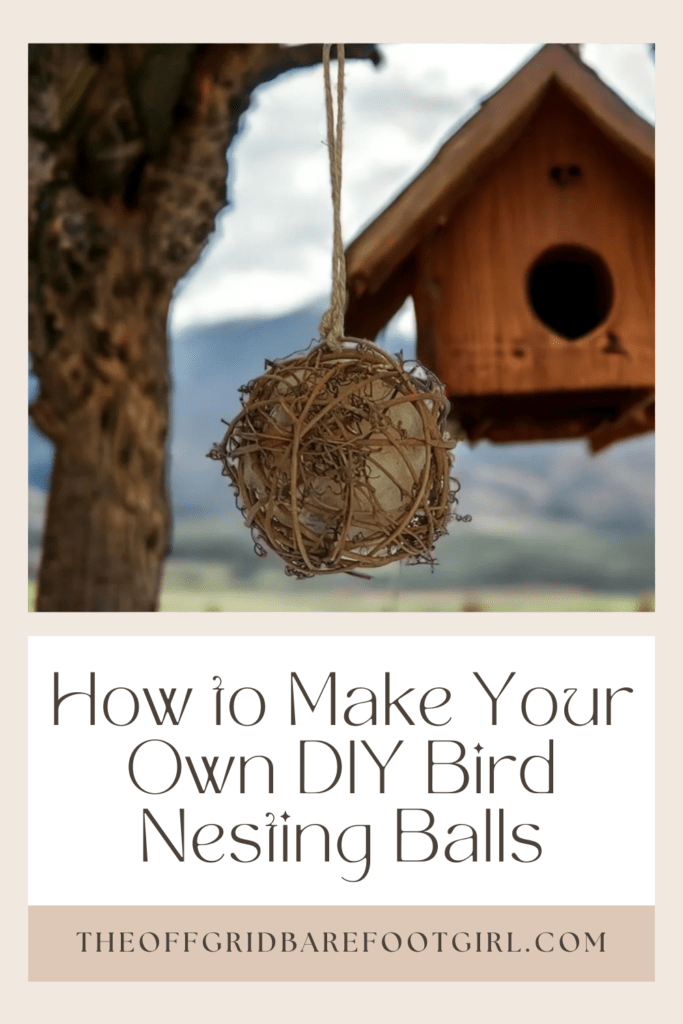
Introduction to DIY Bird Nesting Balls
Hello there, nature enthusiasts! If you’re looking to give our feathered friends a helping hand in the nesting department, you’ve come to the right place. In this DIY guide, I’ll show you how to make your very own bird nesting balls. These are not only fun and easy to make, but they also provide a cozy and safe space for birds to build their nests. So, let’s dive right in and get those creative vibes flowing!
Why Provide Nesting Balls for Birds?
You might be wondering, why bother making nesting balls for birds when they can find materials themselves? Well, dear reader, birds are busy creatures, and sometimes finding suitable nesting materials can be a challenge for them. By providing ready-made nesting balls, you’re giving them a head start and making their life a little easier. Plus, it’s a delightful opportunity for us to bring a touch of creativity to our gardens!
Why I Love Proving Nesting Balls for Birds In My Garden
I absolutely adore providing nesting balls for birds in my garden because it adds an extra touch of beauty and functionality to my outdoor space. The joy I feel watching these tiny creatures build their cozy homes is unparalleled. Not only does it fascinate me to witness their meticulous nest making skills, but it also creates a sense of fulfillment knowing that I am contributing to the conservation of these amazing creatures. These nesting balls offer a safe haven for birds, shielding them from harsh weather conditions and predators while they lay their eggs and care for their chicks.
It’s heartwarming to see the adult birds diligently flying back and forth, collecting materials like moss, twigs, and feathers to create their intricate nests. I take immense pride in knowing that by providing these nesting balls, I am actively supporting the local bird population and helping sustain their delicate ecosystems. Watching the vibrant colors of the birds flit around my garden brings a sense of wonderment and tranquility that cannot be replicated by any other activity.
Benefits of Providing Nesting Balls for Birds
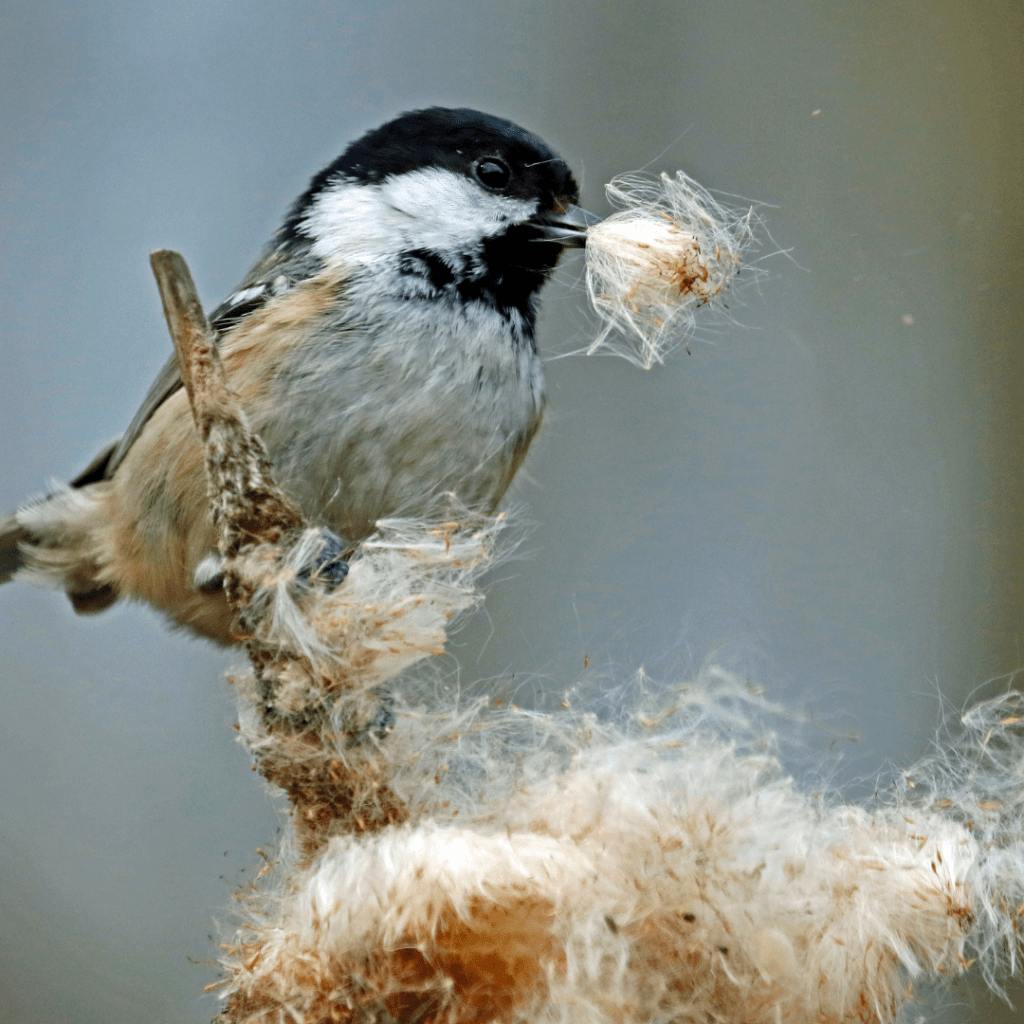
Now that you’re all fired up to be a bird benefactor, let’s talk about the benefits of providing nesting balls for our fine-feathered friends.
Enhances Bird Habitat and Nesting Success
By offering nesting balls, you’re essentially creating a five-star hotel for birds. These little bundles of nesting materials can be a real luxury for them, ensuring a cozy and secure place to lay their eggs and raise their chicks. With your help, they can focus less on finding resources and more on building their nests and raising their families.
Supports Biodiversity and Conservation Efforts
Every nest counts, and by providing nesting balls, you’re actively contributing to the conservation of bird species. By offering an inviting nesting habitat, you attract a diverse range of bird species to your garden, thus promoting biodiversity and creating a harmonious ecosystem. It’s like building a tiny bird utopia right in your own backyard!
Materials and Tools Required
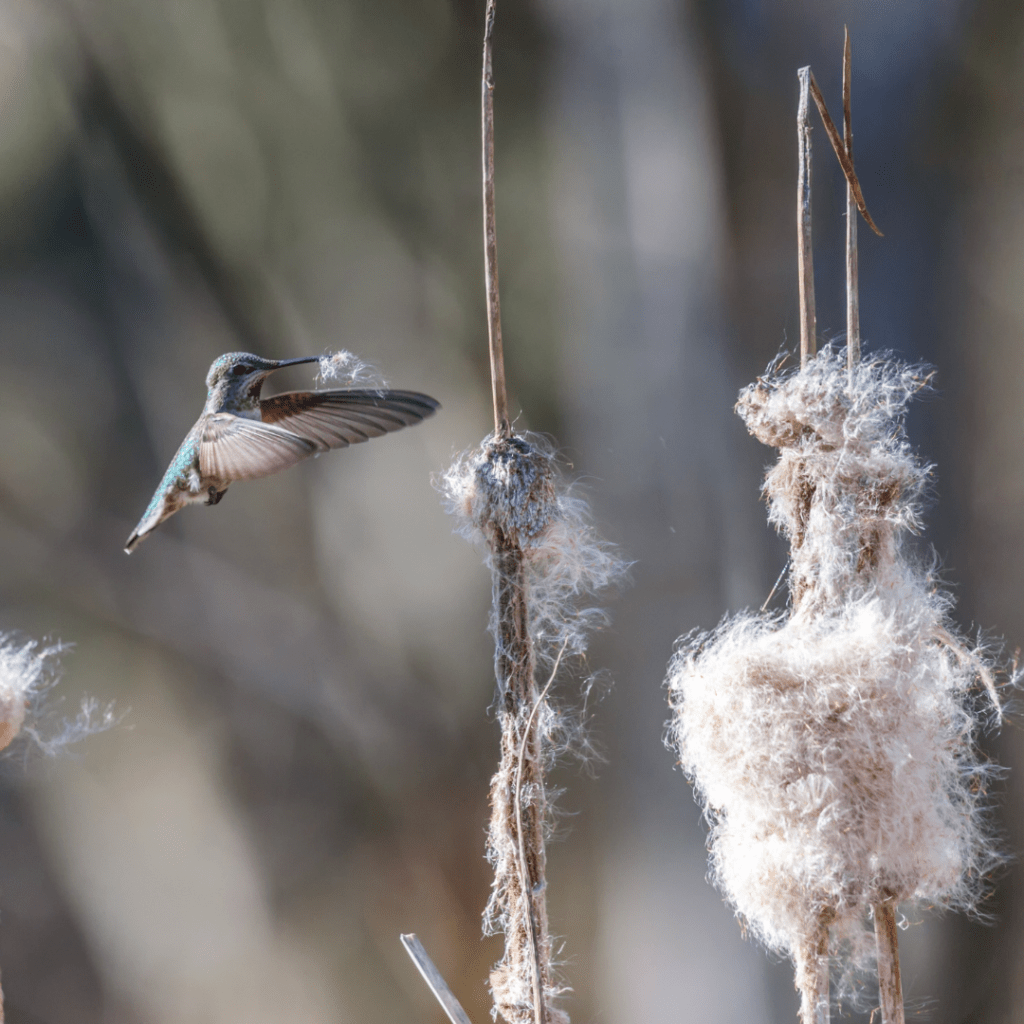
Before you embark on your nesting ball adventure, let’s gather the necessary supplies and tools. Fear not, I won’t send you on a wild goose chase for obscure items.
Gathering the Necessary Supplies

To create your wonderful nesting balls, you’ll need some essentials like natural fibers (such as twine, jute, and cotton string), small twigs, dried grass, moss, small feathers, and anything else you think might make for a comfy bird home. Get creative and explore the wonders of nature! You also can buy wool or alpaca material from the craft stores to add an extra layer of coziness for the birds to take to their nests.

Tools Needed for Nesting Ball Construction
Don’t worry, no fancy equipment is required. You’ll just need a pair of scissors or pruning shears to cut your materials to the desired length. That’s it! It’s all about simplicity and bringing out your inner bird-nesting architect.
Step-by-Step Instructions to Create a Bird Nesting Ball

Now comes the exciting part where we put everything together to create our very own bird nesting balls. Get ready, folks!
Preparing the Base Structure
You want a secure structure that the birds can stand on and easily gather the materials from the structure. Therefore, the structure will need to have wide enough holes for the birds to use their beaks or feet to reach inside for the cozy goodies. A grapevine ball or an empty suet cake bird feeder will do the trick just fine for the main structure.
A Grapevine Ball to Stuff with Bird Nesting Materials

An Empty Suet Cake Bird Feeder to Stuff with Bird Nesting Materials

Adding Natural Nesting Materials
Now it’s time to get wild with creativity! Start weaving or wrapping your gathered materials around the base structure and tuck the materials inside. Add twigs, dried grass, moss, small feathers, or anything else you collected. Feel free to experiment and mix and match different materials until you have a beautiful and snug nest-like structure.

Hanging the Nesting Ball Full of Materials
Once you are satisfied with the amount of material and the overall look of your nesting ball, secure the ball with twine or yarn and hang in a desired place where birds will find and use it. And voila! You have just created a fantastic bird nesting ball.

Tips for Attracting Birds to Your Nesting Ball
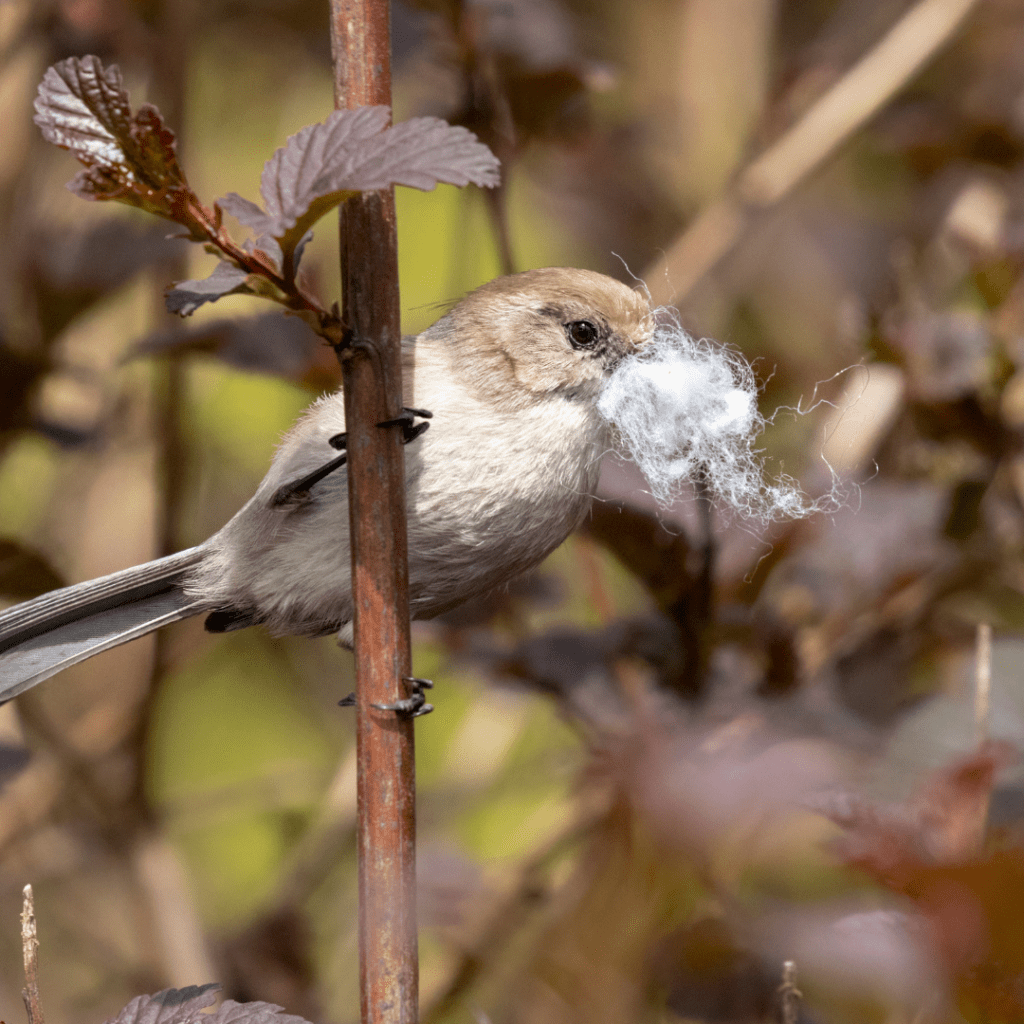
Choosing the Right Location
Picking the perfect spot for your bird nesting ball is like finding the ideal coffee shop – it’s all about location, location, location. Birds, just like humans, have their preferences. Hang your nesting ball in a place that provides some shelter from the wind and rain, but also offers a bit of sunlight to keep those feathered friends warm and cozy. A tree branch or a sturdy hook will do the trick. Just make sure it’s high enough to keep cats from turning your nesting ball into their personal bird buffet. Nobody wants that.
Offering Suitable Nesting Materials
When it comes to nesting, birds can be picky. So, give them the VIP treatment by offering a range of suitable nesting materials. Twigs, feathers, small bits of string or yarn – these are all prime choices. Be generous and stuff that nesting ball to the brim with an assortment of materials. It’s like a designer boutique for birds, except without the hefty price tag. Now that’s something to tweet about!
Providing a Safe and Welcoming Environment
Creating a safe and welcoming environment for your feathered friends is key. Make sure your nesting ball is away from busy areas or places where predators might lurk, like a shady character in a detective novel. A nice, quiet corner of your garden is just the ticket. You can even add some natural foliage around the nesting ball to provide extra camouflage and help those bird parents feel like they’ve stumbled upon the perfect hideaway.
Maintaining and Monitoring the Nesting Balls
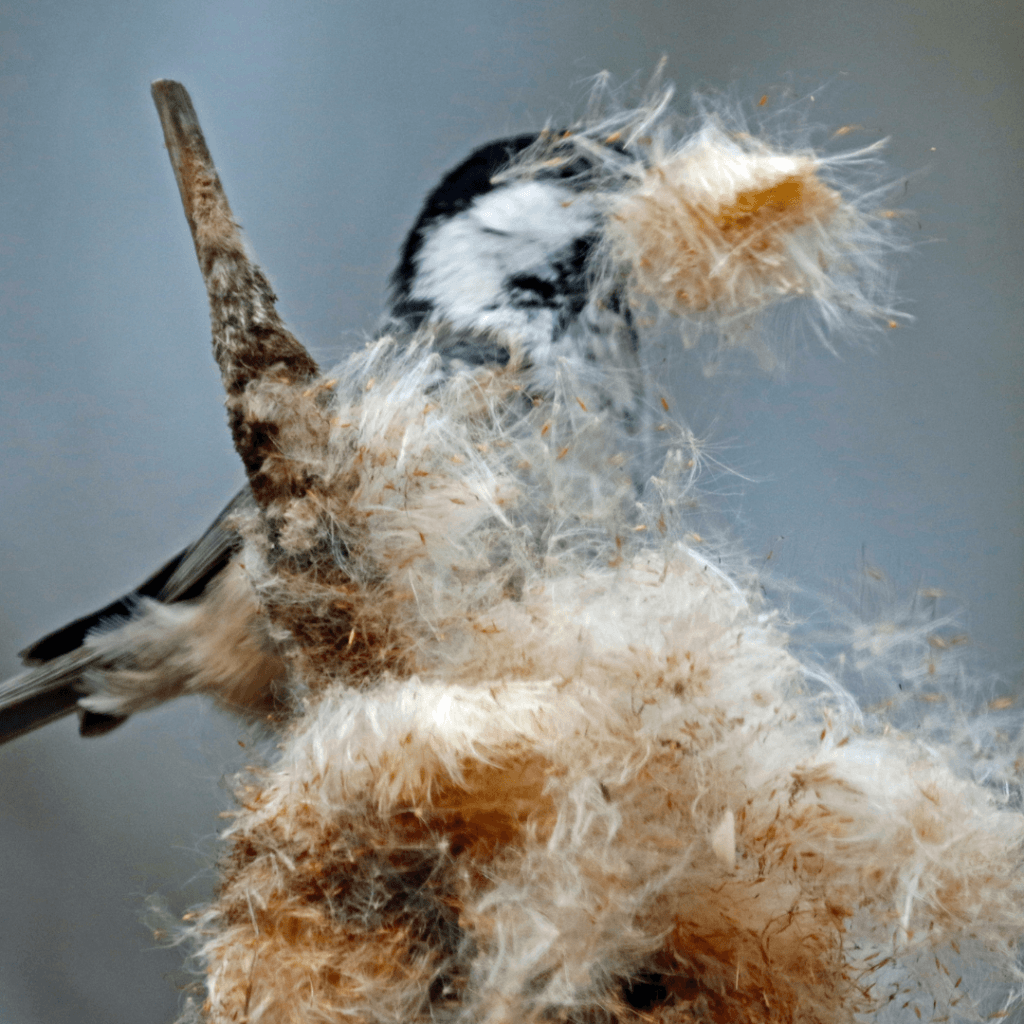
Regular Cleaning and Maintenance
Maintaining your nesting balls may not be as glamorous as sipping champagne on a yacht, but it’s just as important. Regularly inspect your nesting balls for any signs of wear and tear. Replace any damaged or frayed materials to keep those bird materials in top-notch condition. And don’t forget to give them a good clean every now and then. No bird wants to raise a family in a dirty nest. It’s like trying to throw a dinner party in a dumpster. Not exactly the most appetizing setting.
Observing and Documenting Bird Activities
Playing detective can be a lot more fun when birds are involved. Take some time to observe and document the activities around your nesting balls. Grab a cup of coffee, sit back, and enjoy the show. Note down which birds visit, how long they stay, and any interesting behaviors you witness. It’s like running your own avian reality TV series.
Take Bird-Watching Up a Notch with a Bird Feeder Camera!

If you’re a fan of bird-watching and want to take it up a notch, then listen up! I’ve got just the thing for you – a bird feeder camera! This nifty little gadget allows you to get an up-close-and-personal look at all the beautiful birds that visit your backyard. No more squinting through binoculars or straining your neck trying to catch a glimpse of these magnificent creatures, or trying to be quiet as possible without scaring them away.
With this camera, you can observe their every move right from the comfort of your own home. Not only does it provide stunning high-definition images and videos, but it also lets you capture some truly amazing moments in the avian world. From feisty feeding frenzies to graceful flights, you’ll never miss a beat. So why not bring the joy of bird-watching into your living room with this incredible bird feeder camera? Trust me, it’s an experience worth chirping about!
I wrote an indepth article reviewing the Top 5 Affordable Bird Feeder Cameras Under $100 to help bring the world of bird-watching closer to you than ever. Check it out!
Top 5 Affordable Bird Feeder Cameras Under $100
Attract More Bird Activity with a Bird Feeder Obelisk Garden
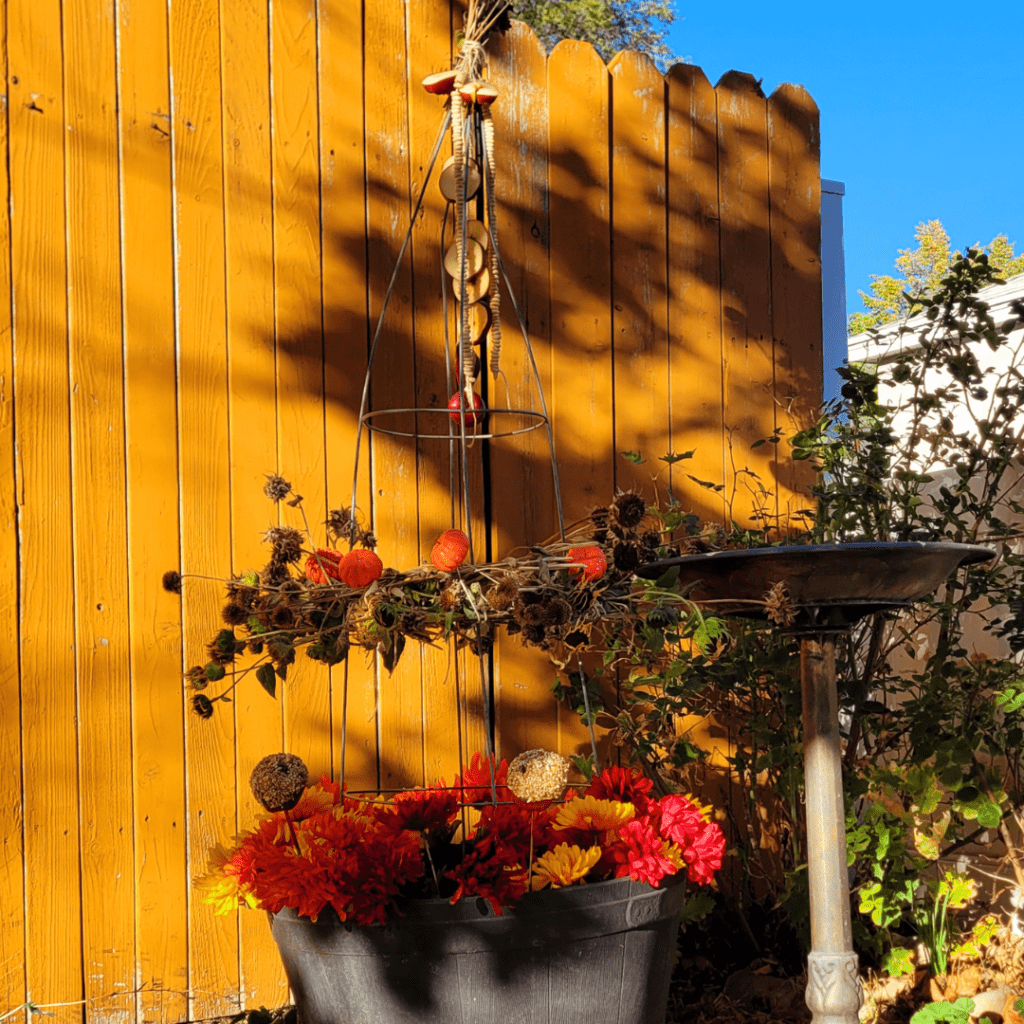
If you’re an avid bird-watcher or simply enjoy the delightful presence of chirping birds in your backyard, consider adding a bird feeder obelisk garden to attract even more feathered friends. This unique and eye-catching structure not only serves as a practical feeding spot, but also adds an aesthetic touch to your outdoor space. The obelisk design features multiple feeding stations at different heights, ensuring that various species of birds can comfortably feed simultaneously. Its towering height allows birds to feel safe from potential predators while enjoying their meals.
Additionally, the open-air design offers excellent visibility for observing bird behavior and capturing remarkable moments through photography or binoculars. With a diverse array of colorful and melodious visitors flocking to your garden, the bird feeder obelisk promises endless entertainment and opportunities for relaxation in nature.
I wrote a tutorial on how to build an easy bird feeder obelisk garden complete with a bird bath to help attract more birds to any bird lover’s area. With a bird feeder obelisk garden, bird bath, bird houses, and bird nesting balls, you can create an aviary oasis in your backyard to enjoy and observe the birds in your area.
How to Make a Bird Feeder Obelisk Garden
Other Creative Ideas for Bird Nesting Structures
Exploring Alternative Nesting Options
Nesting balls are just the tip of the iceberg when it comes to bird housing. Get creative and think outside the nest box. Why not try making a nesting wreath or a hanging gourd house? Your local bird population will thank you for the variety. It’s like offering them a buffet of housing options. Who doesn’t want to live in a neighborhood with diverse architectural styles?
Incorporating Recycled or Upcycled Materials
Being eco-conscious doesn’t mean sacrificing style. You can create unique and environmentally friendly bird nesting structures by incorporating recycled or upcycled materials. Old teacups, straw hats, or even discarded metal containers can be transformed into trendy bird homes. It’s like giving new life to forgotten treasures. Not only will you make the birds happy, but you’ll also impress the neighborhood with your DIY prowess.
Conclusion and Final Thoughts
Creating your own DIY bird nesting balls is a rewarding way to attract and support your local bird population. By choosing the right location, providing suitable nesting materials, and creating a safe environment, you’ll become the ultimate bird real estate agent. And don’t stop at nesting balls – let your creativity soar by exploring alternative nesting options and incorporating recycled materials. Your garden will become the hottest hangout spot for birds, and you’ll be the talk of the avian town.
Creating DIY bird nesting balls is a fulfilling and eco-friendly way to enhance the habitat for birds and support their nesting efforts. By following the steps outlined in this article, you can easily provide a cozy and safe space for birds to build their nests and raise their young. Remember to keep an eye on the nesting balls, clean and maintain them regularly, and document the bird activity for your enjoyment. Whether you choose to make traditional nesting balls or explore alternative nesting options, your efforts will contribute to the well-being of our feathered friends and help create a thriving avian community in your surroundings. So, get creative, have fun, and enjoy the beauty of nature right in your own backyard.
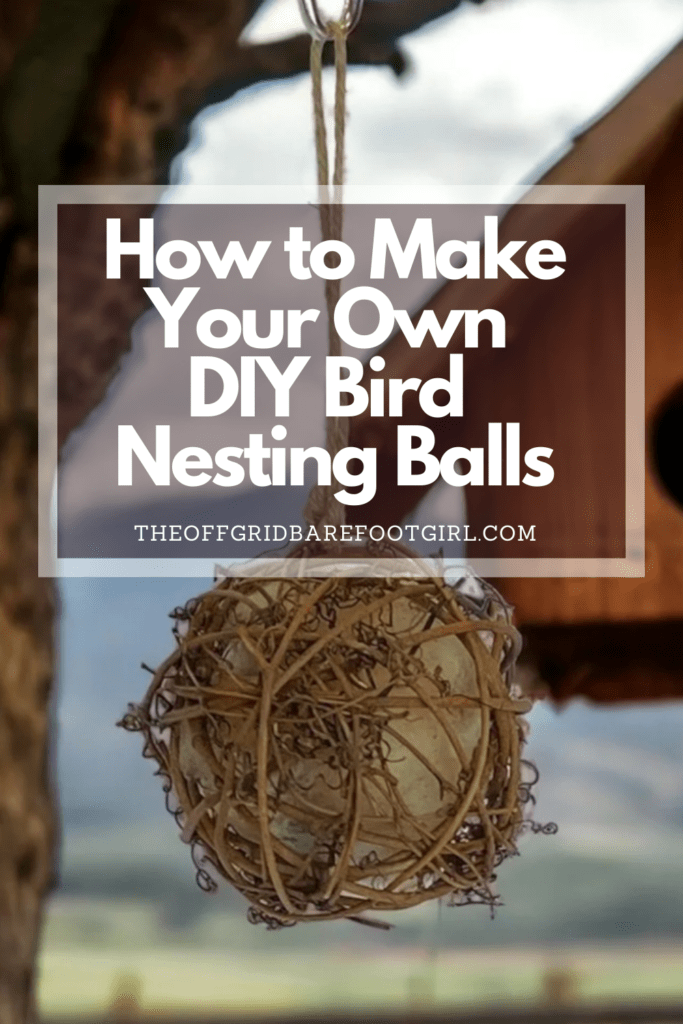
Frequently Asked Questions
1. How long does it take for birds to start using the nesting balls?
When it comes to birds using nesting balls, there isn’t a solid answer that applies to all species. Different birds have different nesting habits and preferences, so the time it takes for them to start using these balls can vary. However, on average, many bird species are quick to adapt and explore new opportunities in their environment. Once a nesting ball is introduced into their surroundings, it might take anywhere from a few hours to a couple of weeks for certain birds to begin investigating and accepting them as suitable nesting sites. Factors such as the availability of other natural nest options, familiarity with human presence, location of the ball, and time of year can also play a role in determining how long it takes for birds to use the nesting balls.
2. Can I hang the nesting balls in any location?
Nesting balls can be hung in a variety of locations to attract different types of birds. It’s important to consider the needs and preferences of the birds you want to attract. If you want to target small songbirds like finches or sparrows, hanging the nesting balls in trees or shrubs can provide them with the perfect sheltered spot. For larger birds such as woodpeckers or owls, hanging the nesting balls on taller structures like poles or tall trees can be more suitable. Additionally, make sure that the location is not easily accessible to predators, such as cats or squirrels, as this could discourage bird activity. Overall, choosing an appropriate location is crucial for attracting your desired bird species and ensuring their safety and comfort.
3. How often should I clean and maintain the nesting balls?
When it comes to cleaning and maintaining nesting balls, the frequency largely depends on the type of birds you are attracting and the environment they are in. Generally, it is a good idea to inspect and clean the nesting balls at least once a year, preferably before the breeding season begins. However, if you notice any signs of damage or deterioration such as frayed fibers or loose twigs, it’s crucial to address them sooner. Additionally, if you live in an area with heavy rainfall or high humidity levels, it might be necessary to clean the nesting balls more frequently to prevent mold or mildew growth. In terms of maintenance, removing any fallen feathers or debris from around the nest can help maintain its cleanliness and prevent unwanted pests from inhabiting the area. Ultimately, keeping a close eye on your nesting balls’ condition and responding accordingly will ensure a safe and inviting nesting environment for your feathered visitors.
4. Are there any specific nesting materials that attract certain bird species?
Certain bird species do have preferences when it comes to their choice of nesting materials. For instance, the goldfinch, with its vibrant yellow plumage, has a penchant for using soft materials like thistle down or dandelion seeds in building its nest. Similarly, Robins are fond of incorporating mud into their nests, using it as a sturdy foundation. Wrens are known to construct domed nests, which they adore lining with feathers and hair, giving their offspring a cozy and warm habitat. On the other hand, woodpeckers prefer excavating holes in trees using their strong beaks rather than building traditional nests. However, many birds can adapt and make do with whatever materials are available in their surroundings. So next time you spot a beautiful feather lying on the ground during springtime — go ahead and leave it there; you might just be providing a desirable nesting material for some delightful avian neighbors!
Summary
I hope I have inspired you to build your own bird nesting balls with these tips and products.
If you were encouraged by this post, I invite you to check out my FREE Printables Page for fun free printables, planners, and charts.
ENTER MY FREE Printables Page HERE
Here are some more of my composting and gardening inspiration posts to check out!
How to Make a Bird Feeder Obelisk Garden
Top 5 Affordable Bird Feeder Cameras Under $100
How to Grow a Fall Garden: 9 Best Fall Crops
How to Start Composting for the Garden: A Step-by-Step Guide
Blessings,
The Off Grid Barefoot Girl




